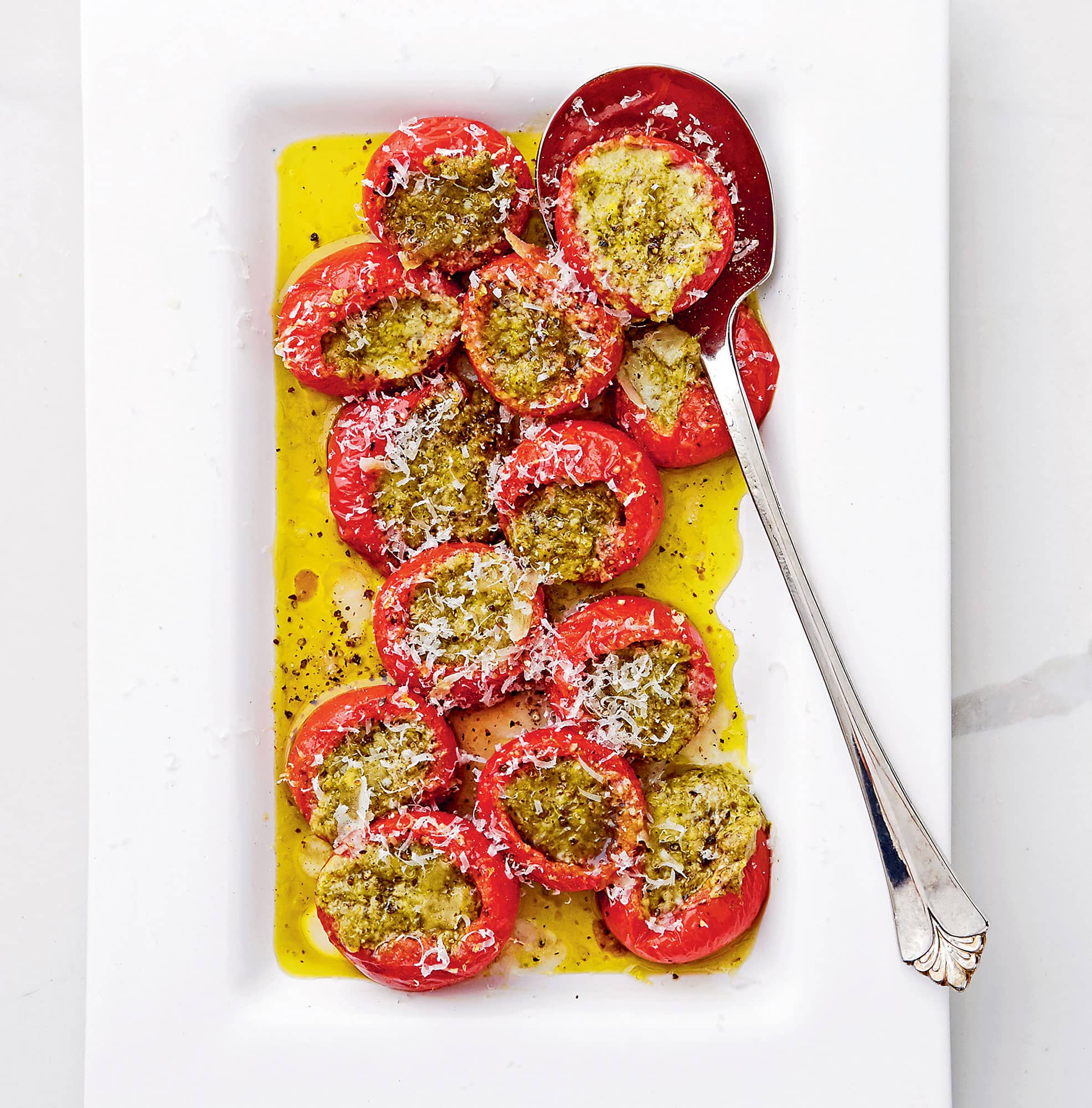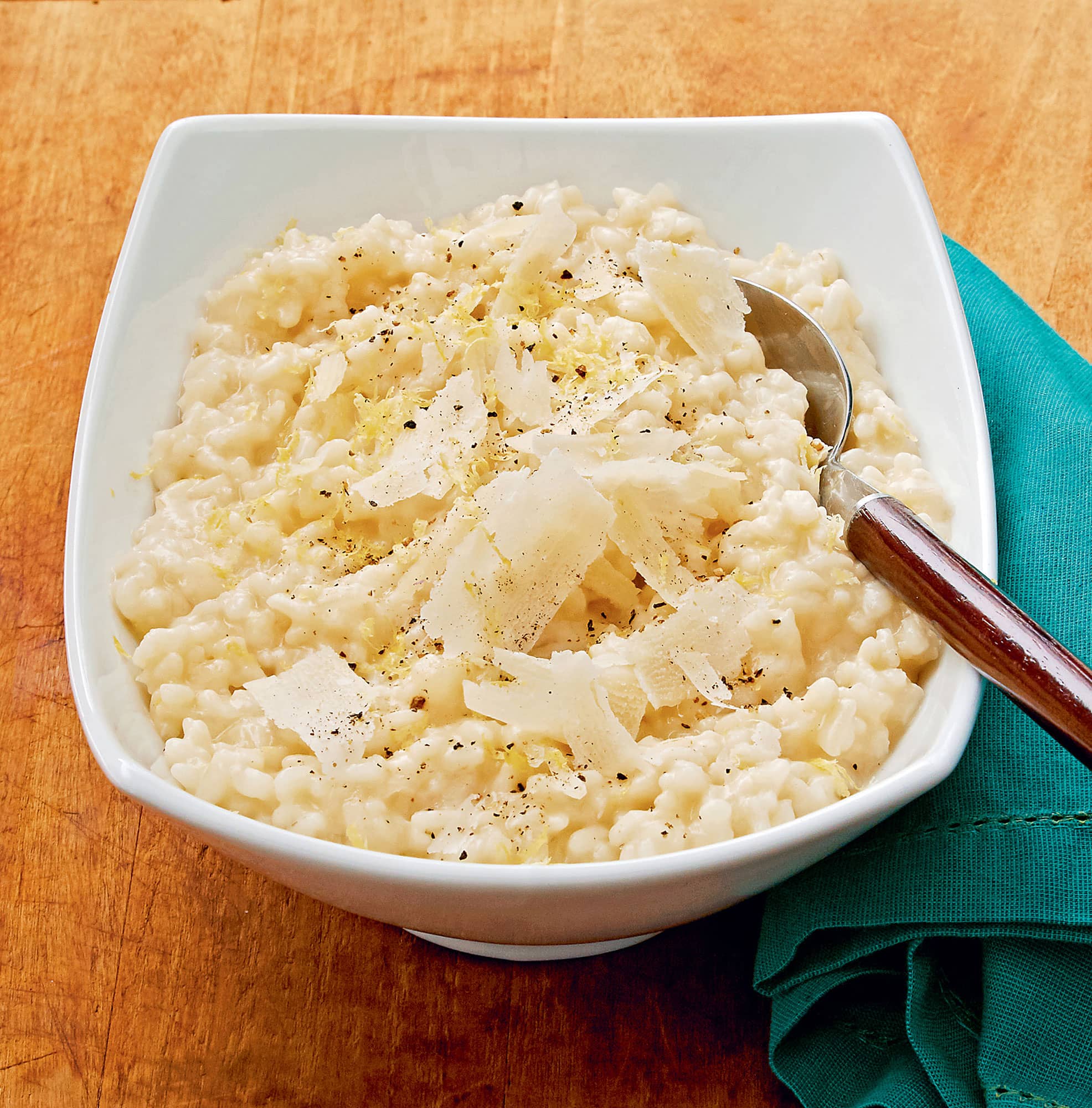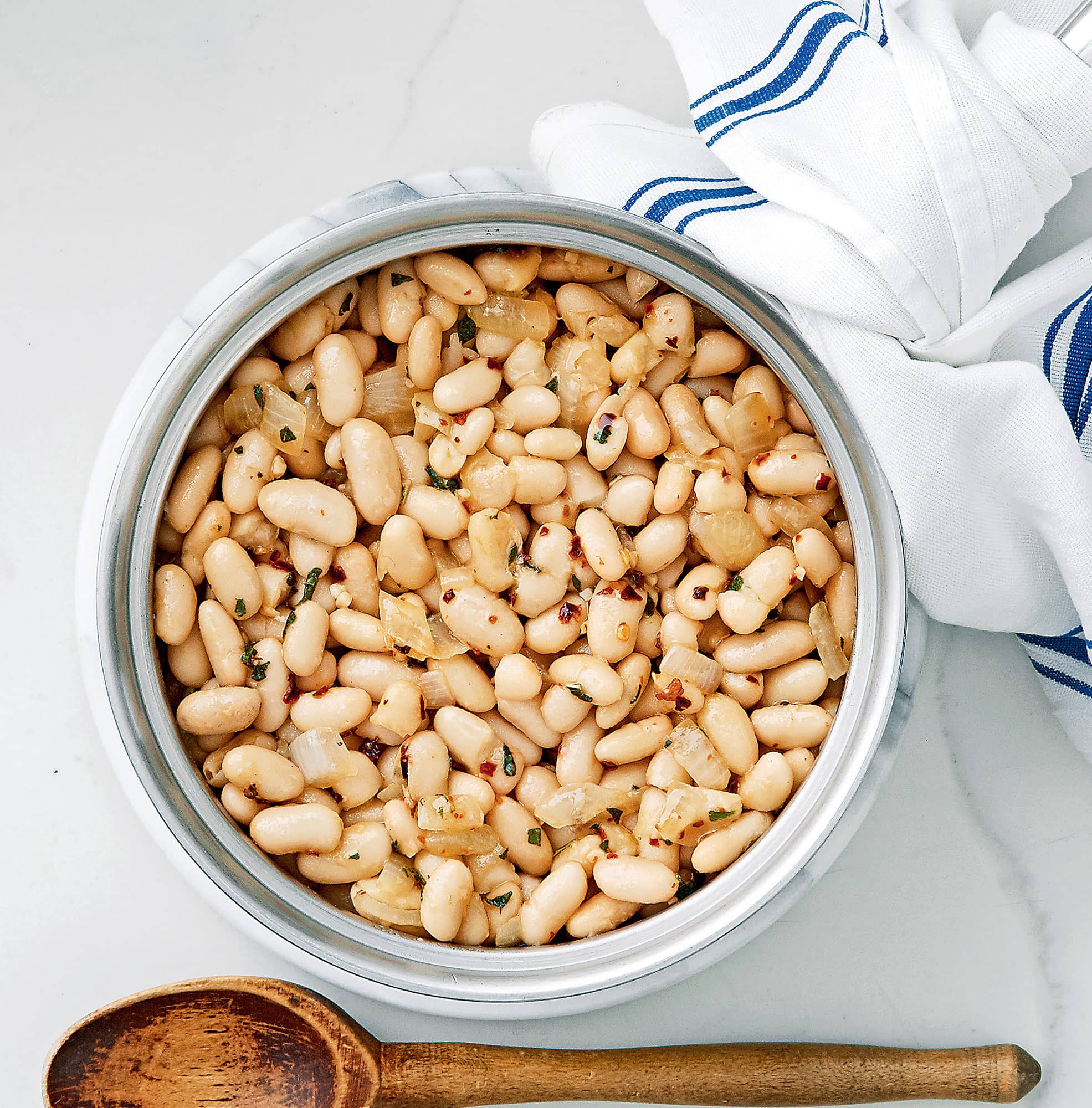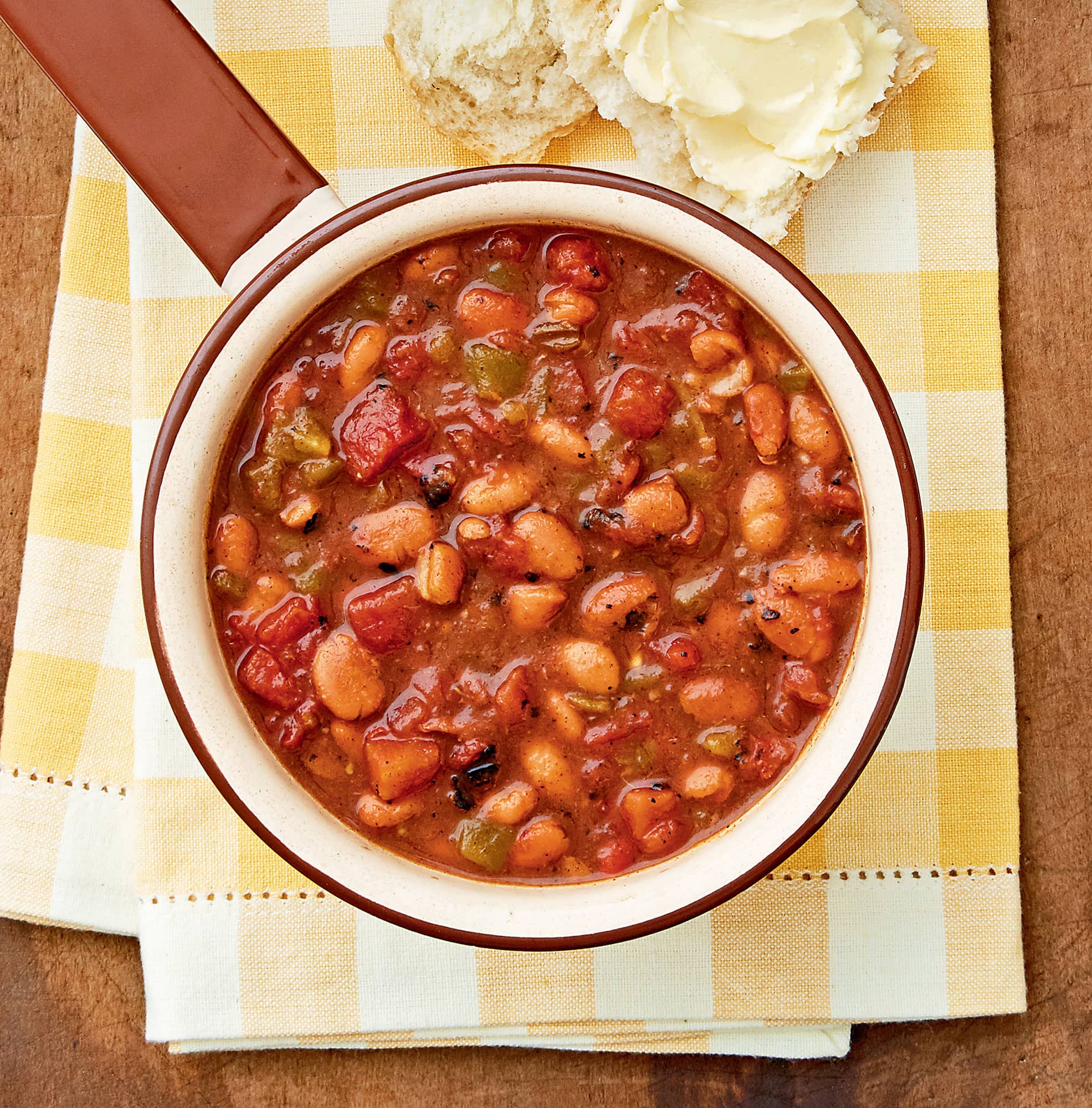
◁ 19 | ROASTING MIXED VEGETABLES IN A WOOD-FIRED OVEN
Serves 4 to 6
Roasted Vegetable Medley
Notice I didn’t call this ratatouille (which is its own distinct dish) or vegetable stew (which just doesn’t sound all that appealing). Sometime over the last generation or so, the classic ratatouille (which is a combination of onion, tomato, eggplant, and zucchini) morphed into a more free-form dish composed of cooked summer vegetables, often including bell peppers and fennel. I say let’s call it a medley and include anything that appeals to you from the following list, leaving out the vegetables you don’t like. Or, for a beautiful and delicious variation, choose the vegetables on the basis of their colors, such as yellow crookneck squash, yellow and gold tomatoes, and yellow or orange peppers, and produce a dish with all the colors of sunshine.
INGREDIENTS
2 to 3 pounds (0.9-1.4 kg) of cut vegetables, including:
Eggplant, including the long, skinny Japanese eggplant
All kinds of tomatoes
All kinds of peppers
All kinds of summer squash
Onions
Garlic
Fennel
Olive oil
Capers
Basil
Oregano
Salt and freshly ground black pepper
METHOD
1. Preheat your wood-fired oven to about 400°F (200°C).
2. Cut up the vegetables into approximately 1-inch (2.5 cm) pieces.
3. Add enough olive oil to an earthenware casserole or stainless-steel pan to generously coat it. Add the vegetables, capers, and herbs, along with salt and freshly ground pepper, and toss the vegetables until they are all coated with the oil and seasonings. You can cover the pan or casserole if you want the vegetables evenly steamed or leave it uncovered for a more rustic, slightly smoky taste with a few charred edges here and there. Bake in the oven until cooked to your desired degree of doneness, testing after about 15 minutes.
4. You can serve the medley as is or dress the dish with chopped fresh herbs and a little more olive oil and a splash of vinegar. Serve warm or at room temperature.

◁ 20 | ROASTING POTATOES IN A WOOD-FIRED OVEN
Serves 4
Smashed New Potatoes with Miso Mayonnaise
Be forewarned: there’s an addictive quality to these potatoes that goes beyond their simple ingredients. Originally inspired by a recipe I ran across on the website Food52, I made some changes and can tell you that it is some kind of wonderful. It’s best served hot out of the oven.
INGREDIENTS
11/2 pounds (680 g) small new potatoes, about the size of golf balls
Olive oil
1/2 cup (115 g) mayonnaise
1 tablespoon (16 g) miso paste, brown preferred
Zest and juice of 1 lemon
2 or 3 scallions, thinly sliced, for garnish
METHOD
1. Preheat your wood-fired oven to about 500°F (250°C).
2. Steam the potatoes in a covered pan until the tip of a sharp knife pierces the flesh to the middle easily.
3. Choose a baking pan that will fit the potatoes in a single layer. Coat the pan liberally with olive oil. Once the potatoes have cooled enough to handle, place them one at a time in the pan and gently flatten with the heel of your hand. Be careful not to smash the potatoes apart. Turn the flattened potatoes carefully so that both sides are coated with oil. Place the pan in the oven.
4. Make the mayonnaise sauce by combining the mayonnaise, miso, lemon zest, and lemon juice in a bowl using a fork.
5. Once the potatoes have formed a golden crust on one side—after 10 minutes or so—flip them and allow them to crisp on the other side. Once they are done, the potatoes can be served right from the pan, topped with the mayonnaise sauce and a scattering of the sliced scallions. Enjoy!

◁ 21 | ROASTING TOMATOES IN A WOOD-FIRED OVEN
TK
Roasted Tomatoes
These are the essence of simplicity and a definite crowd-pleaser. A cupcake pan is the perfect cooking pan; if you don’t have one, you can fashion a facsimile by scrunching aluminum foil into a shape that holds individual tomatoes upright. For the record, even relatively hard, out-of-season tomatoes are transformed by the wood-fired heat into a very tasty side dish.
INGREDIENTS
(per person)
1 tomato
1/2 teaspoon olive oil
1 teaspoon prepared pesto
Salt and freshly ground black pepper
1 tablespoon (5 g) grated Parmesan cheese
METHOD
1. Preheat your wood-fired oven to about 450°F (230°C).
2. Slice the top one-quarter (or less) from each tomato. Using the tip of a sharp, serrated knife, remove almost all of the core of the tomato, leaving the last bit at the bottom to act as a “plug” to keep the pesto from draining out.
3. Drizzle each tomato with the olive oil, fill the void with the pesto, and sprinkle the top with salt and pepper.
4. Sprinkle the top of each tomato with the Parmesan. Place the tomatoes in the cupcake pan or makeshift aluminum foil pan.
5. The tomatoes will heat through in about 15 minutes. Serve hot or at room temperature.

◁ 22 | ROASTING GREENS IN A WOOD-FIRED OVEN
Go-To Mixed Greens
All kinds of greens—from spinach to Swiss chard to all types of mustard greens and kales—are a great, fast-cooking addition to wood-fired fare, especially good for folks wanting to avoid carbohydrates. Anyone familiar with cooking fresh greens by more traditional methods knows that a mountain of greens quickly cooks down to just a couple of individual servings. Because of this, my favored cooking container for greens is one of those large disposable aluminum roasting pans (like the ones used to cook turkeys), only I don’t consider them “disposable.” The procedure outlined below is based on individual heads of greens as they are sold at grocery stores. I wish I could say that each head will serve two people, but it all depends on how generous the heads are and how much you and your diners like greens. I’d say play it safe and count on one-and-a-half heads per person, which, just so you know, is going to look like a lot of fresh greens.
INGREDIENTS
(per person)
2 tablespoons (28 ml) olive oil
11/2 heads greens
1 tablespoon (15 ml) vinegar, preferably sherry vinegar
Garlic cloves, pressed, as desired
Salt and freshly ground black pepper
METHOD
1. Preheat your wood-fired oven to about 450°F (230°C).
2. Add the olive oil to the roasting pan and, using your fingers, rub the oil over the bottom and sides of the pan.
3. Coarsely chop the greens and add them to the pan. Sprinkle with the vinegar and add the garlic and salt and pepper. Mix to coat the greens, and place them in the oven. The greens will cook so quickly that there’s no real need to cover them. Toss them every couple of minutes just until they have turned bright green and wilted. Serve immediately, with an additional dressing of oil and vinegar, if desired.

◁ 23 | MAKING RISOTTO IN A WOOD-FIRED OVEN
Serves 6
Break-the-Rules Risotto
A fair amount of mystique surrounds the traditional making of risotto, most of which has to do with gentle and consistent stirring over a long period of time. Frankly, I had my doubts about cooking it in a wood-fired oven because there was no way I could give it the kind of attention in the stirring department as I was supposedly supposed to. I decided to give it a try anyway and made it in my earthenware bean pot because it seemed about the right size and I knew it could withstand the high heat of the oven. Like I said, gentle, regular stirring was out of the question, and I’m sure the temperature was much higher than anyone would ever recommend, so I basically broke every rule for making risotto, and you know what? It turned out perfectly. I’m sure there’s a lesson in there—I just haven’t figured out what it is yet.
INGREDIENTS
4 tablespoons (55 g) unsalted butter
1 tablespoon (15 ml) olive oil
1/2 medium yellow onion, finely chopped
5 cups (1.2 L) chicken or vegetable broth
1 cup (235 ml) dry white wine
2 cups (390 g) Arborio rice
1 cup (100 g) grated Parmesan cheese
Salt and freshly cracked black or white pepper
METHOD
1. Preheat your wood-fired oven to about 400°F (200°C).
2. Put 2 tablespoons (27.5 g) of the butter and the olive oil in the bean pot and place in the oven to melt. Add the onion, stir, and place back in the oven for 10 minutes or so, just long enough to soften the onion.
3. Combine the broth and wine in a large pitcher.
4. Add the rice to the sautéed onion and stir to coat the rice in the oil and butter. Add 41/2 cups (1070 ml) of the broth to the pot and stir; reserve the leftover wine and broth combination. Cover the pot with its lid and place in the oven. If you have a live fire in the cooking chamber, turn the pot 90 degrees every 15 minutes.
5. Check the rice after 1 hour or so. Most likely it will have absorbed all the liquid. If so, add about 1/2 cup (120 ml) of the reserved wine and broth combination, the Parmesan, and the remaining 2 tablespoons (27.5 g) butter and stir to incorporate. Replace the lid and put the pot back in a cooler part of the oven until you’re ready to serve. If, when you check the rice after an hour of cooking, it’s still not done, stir in 1/2 cup (120 ml) of the wine and broth combination, cover the pot, and place back in the oven for an additional 10 to 15 minutes before adding more broth, the Parmesan, and the remaining butter.

◁ 24 | SLOW-COOKING WHITE BEANS IN A WOOD-FIRED OVEN
Makes about 7 cups (1.6 L)
Slow-Cooked Italian White Beans
The Italian tradition of cooking white beans overnight in a Chianti bottle (cannellini in fiasco) nestled into the ashes of a still-hot wood-fired oven has always appealed to me. Although, if I’m honest, it seems kind of silly to shake the beans out of the bottle, more or less one at a time, once they’re cooked. And I’ve always been a little spooked about the possibility of the Chianti bottle breaking if the heat accidentally got too high. These beans are so good, I’d hate to waste them. Truth be told, most folks (even in Italy) have stopped using an empty Chianti bottle and now favor a glazed earthenware bean pot (called a coccio) with a lid. Makes sense to me.
INGREDIENTS
1 pound (455 g) dried cannellini beans, rinsed and picked over
1/4 cup (60 ml) good-quality olive oil (the greener and fruitier, the better)
1/2 medium yellow onion, diced
4 medium fresh sage leaves
8 medium garlic cloves, quartered
1/4 teaspoon crushed red pepper flakes
Kosher salt and freshly ground black pepper
(special equipment)
An 8-quart (7.5 L) heat-proof glazed terra-cotta bean pot with a lid
METHOD
1. There are two ways to cook the cannellini beans: fast or slow. If you decide to cook them fast (in an hour or less), you’ll need to either soak the beans overnight or do a fast soak: put the beans in a good-size pot and cover with a couple of inches of water. Bring the water to a boil over high heat. Cook the beans for 2 minutes. Remove the pan from the heat, cover, and let the beans soak in the water for 1 hour. Drain and proceed with the recipe.
If you decide on the slow method, there’s no need to presoak or fast-soak the beans. Just proceed with the recipe and count on between 3 and 4 hours (or overnight) for the beans to cook.
2. Preheat your wood-fired oven. You want to cook the beans in the ashes of a waning fire, at about 350°F (180°C).
3. Mix the beans with the olive oil, onion, sage, garlic, red pepper flakes, and salt and pepper in the bean pot.
4. Cover the beans with water; cover the bean pot and nestle it into the ashes of the waning fire. If you’ve presoaked the beans, they should be ready in an hour or so, although older beans take longer to cook than a new crop, so be prepared. If you haven’t soaked the beans, do like the Italians do: just put them in the dying fire and go to bed. They’ll be ready to use the following morning—in soups and stews, as a side dish (especially wonderful with roast lamb), or as a white bean dip on bruschetta.

◁ 25 | PREPARING PINTO BEANS IN A WOOD-FIRED OVEN
Makes about 8 cups (1.9 L)
Cowboy Chili Beans
Every good home cook needs a couple of tricks up his or her sleeve, and this is one of them: four ingredients that produce flavorful and versatile beans. If you’re not familiar with Ro-Tel, you need to be: it’s a quality product, finally with the nationwide distribution it deserves. It’s worth splurging on an earthenware bean pot for this recipe alone.
INGREDIENTS
1 pound (455 g) dried pinto beans, rinsed and picked over
2 cans (10 ounces, or 280 g) Ro-Tel (diced tomatoes with green chiles)
1 tablespoon (7.5 g) chili powder
1 teaspoon ground cumin
(special equipment)
An 8-quart (7.5 L) heat-proof glazed terra-cotta bean pot with a lid
METHOD
1. To start, you’ll need to either soak the beans over night or do a fast soak. For a fast soak, put the beans in a good-size pot and cover with a couple of inches of water. Bring the water to a boil over high heat. Cook the beans for 2 minutes. Remove the pan from the heat, cover, and let the beans soak in the water for 1 hour. For the overnight soak, simply put the beans in a large pot, add enough water to cover the beans by a couple of inches, and let sit overnight. Once they’ve been soaked, whether fast or overnight, drain them and proceed with the recipe.
2. Preheat your wood-fired oven to between 350°F and 400°F (180°C and 200°C).
3. Mix the beans with the Ro-Tel, the chili powder, and the cumin in the bean pot. Add water to cover the beans by about 1 inch (2.5 cm).
4. Cover the bean pot and nestle it into the ashes of the waning fire. The beans should be ready in 1 hour to 1 hour 30 minutes, although older beans take longer to cook than a new crop, so be prepared. If you haven’t presoaked the beans, do like the Italians do: just put them in your bean pot, nestle the pot in the dying fire, and go to bed. They’ll be ready to use the following morning.